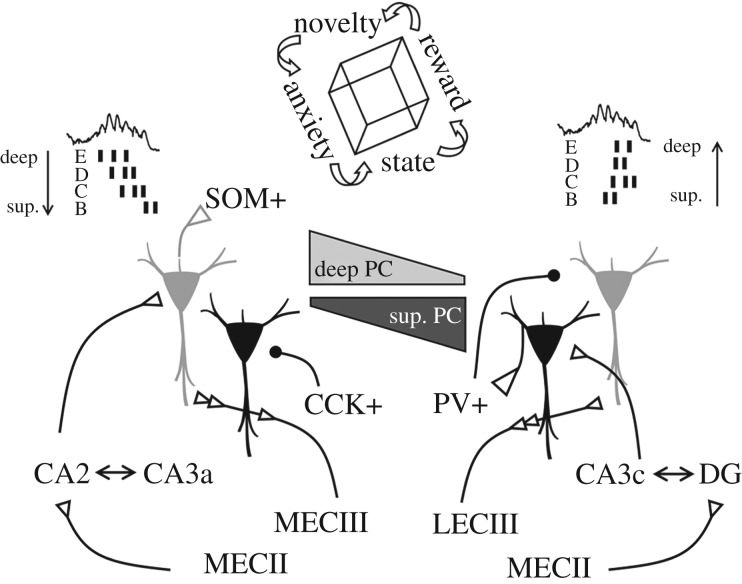Figure 4.
Potential mechanisms for sequence orthogonalization across deep and superficial CA1 sublayers. Different responsiveness of deep and superficial (sup.) cells to a collection of pre-synaptic inputs from CA2 to CA3 regions may support different timing for activation in a sequence, which together with dedicated inhibitory control will determine firing selection across CA1 sublayers. Entorhinal inputs converging differently in deep and superficial cells across the proximodistal axis could additionally bias firing depending on the animal location and salient sensory information. State and emotional factors represent additional orthogonalizing factors.

